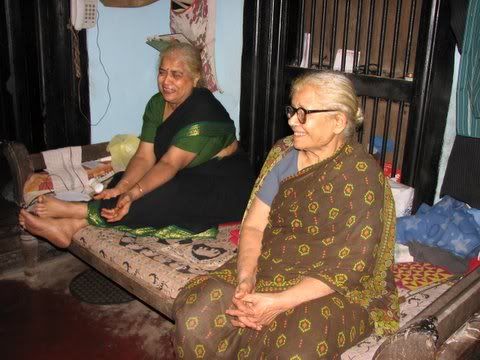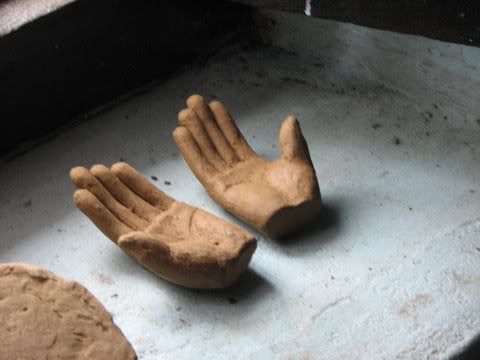Agumbe....Dodda Mane
December 5, 2008
I just realized that I have not, so far (two months have elapsed!) posted about the heritage house at Agumbe, Dodda Mane (Big House), which still stands proudly, and is used as a family residence, too, by the very hospitable Kasturi Akka and her family. That’s Kasturi Akka on the left, and her mother on the right…
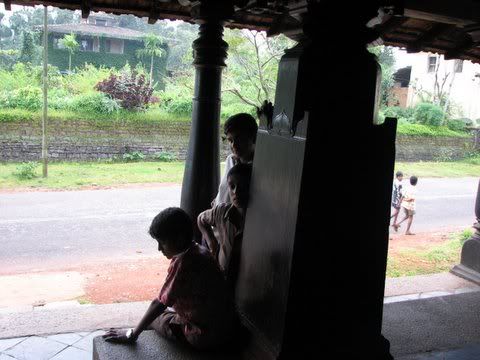 The house was just incredible; all I was able to do was to carry away some vignettes...
Here's detail from the massive front door frame:
The house was just incredible; all I was able to do was to carry away some vignettes...
Here's detail from the massive front door frame:
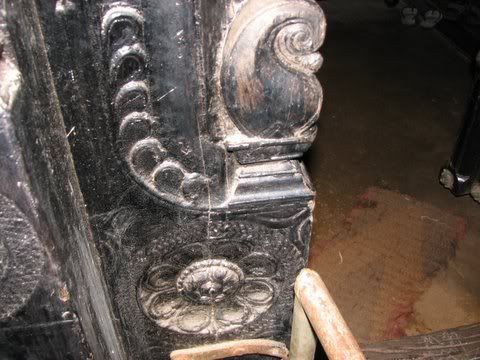 Upstairs was this lovely dressing table:
Upstairs was this lovely dressing table:
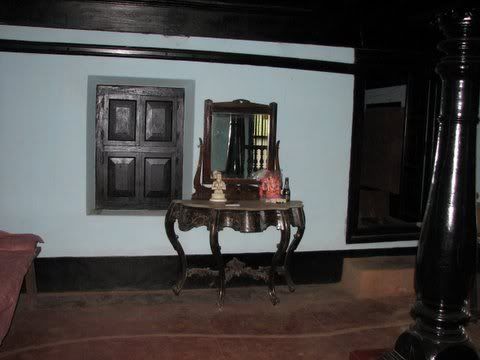 Like most large and old houses, Dodda Mane has two staircases, the back one
Like most large and old houses, Dodda Mane has two staircases, the back one
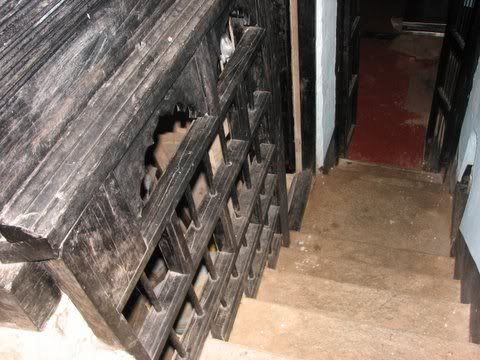 and the front one
and the front one
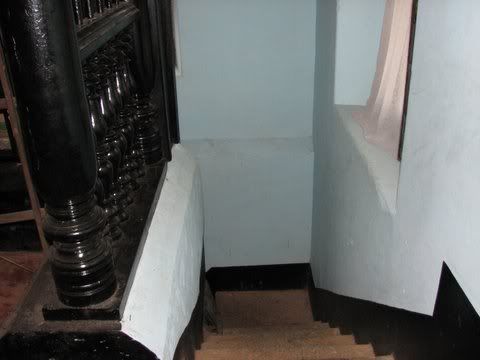 In the dark area at the centre of the house is the puja room:
In the dark area at the centre of the house is the puja room:
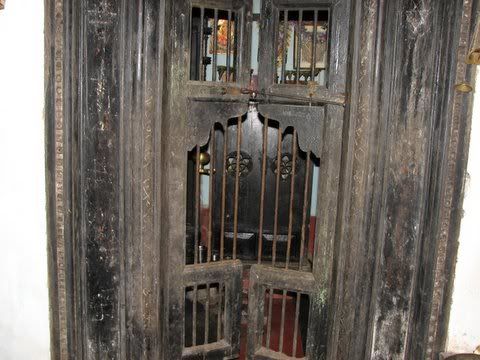 There was someone very artistic in residence, because the kOlam in front of the puja room was beautiful:
There was someone very artistic in residence, because the kOlam in front of the puja room was beautiful:
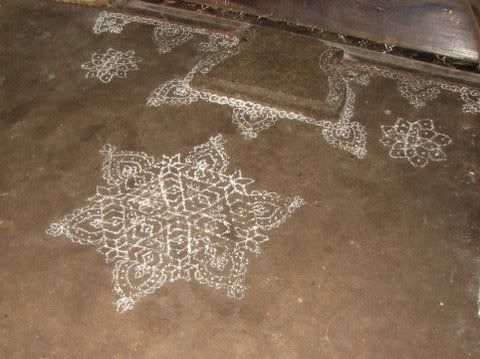 Here's the inside of the puja room:
Here's the inside of the puja room:
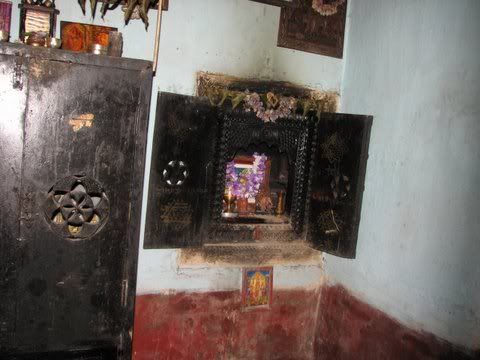 In the dining room, I saw the puja vessels after they had been washed and polished; obviously, the puja room is constantly in use:
In the dining room, I saw the puja vessels after they had been washed and polished; obviously, the puja room is constantly in use:
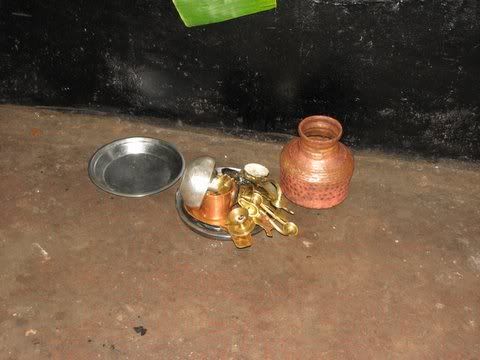 The old barrels for storage stood cheek-by-jowl with the new plastic buckets-- and the idli batter grinding machine on the left:
The old barrels for storage stood cheek-by-jowl with the new plastic buckets-- and the idli batter grinding machine on the left:
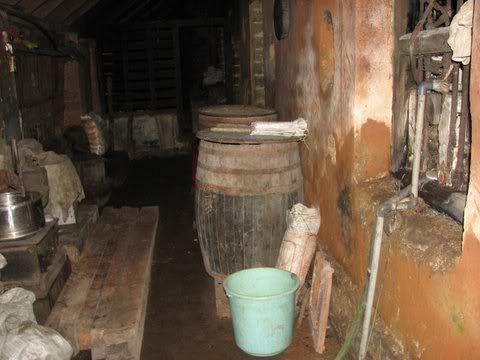 The bathing room area itself is a period piece...here's a clothes hook, so artistic!
The bathing room area itself is a period piece...here's a clothes hook, so artistic!
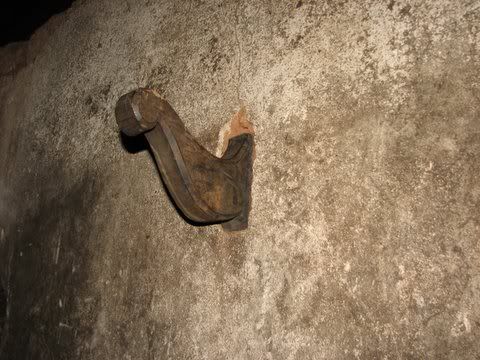 The water is pumped up from the well...
The water is pumped up from the well...
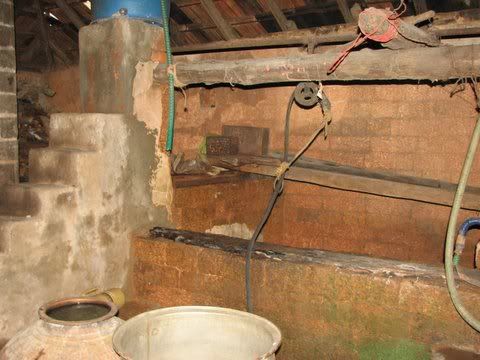 Then heated up in these large copper boilers, set into concrete:
Then heated up in these large copper boilers, set into concrete:
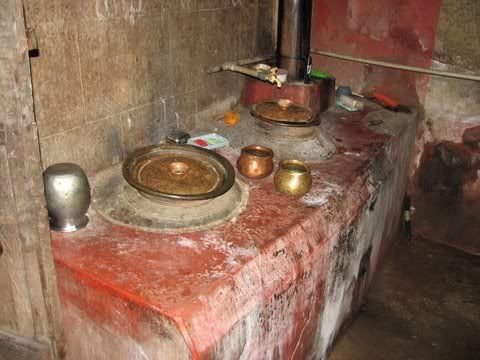 The dining hall is another large room; just look at those beams above!
The dining hall is another large room; just look at those beams above!
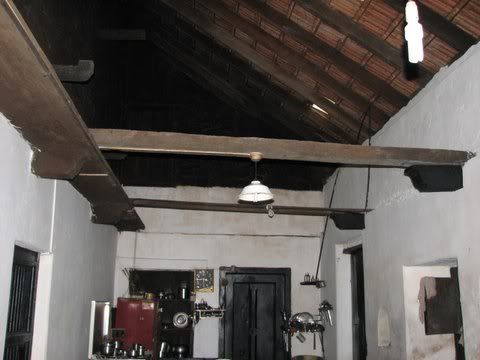 It leads into the tiny kitchen and the very large pantry...I used the flash to get these beautiful old storage jars:
It leads into the tiny kitchen and the very large pantry...I used the flash to get these beautiful old storage jars:
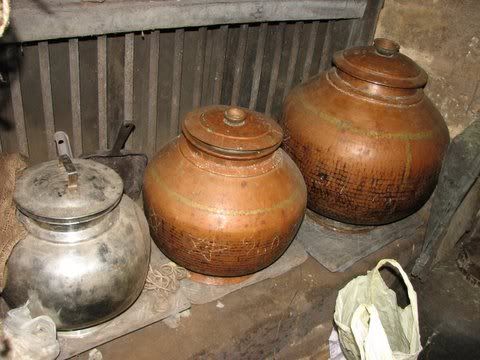 You can see the variety of items stored in the dark pantry!
You can see the variety of items stored in the dark pantry!
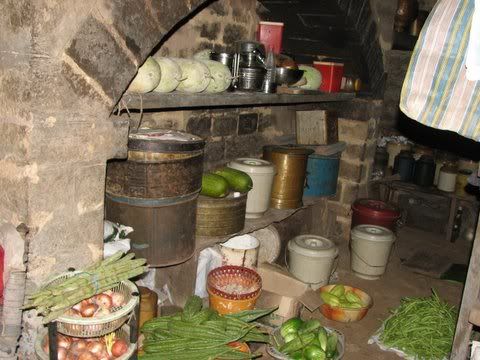 The same artistic person (I never got to finding out exactly who it was, if it was one person or more) had decorated other doors, too:
The same artistic person (I never got to finding out exactly who it was, if it was one person or more) had decorated other doors, too:
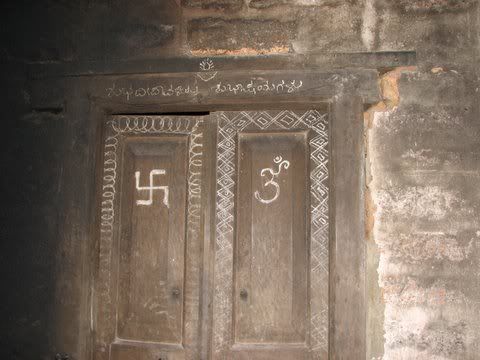 Even the door to the cowshed was looking lovely as a result!
Even the door to the cowshed was looking lovely as a result!
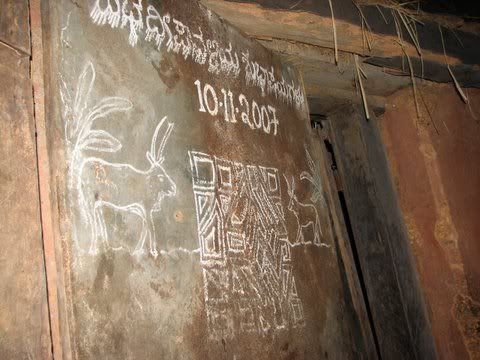 Here are the kine (I decided to use an old English word for the cattle, as it's an old house!) in the cowshed:
Here are the kine (I decided to use an old English word for the cattle, as it's an old house!) in the cowshed:
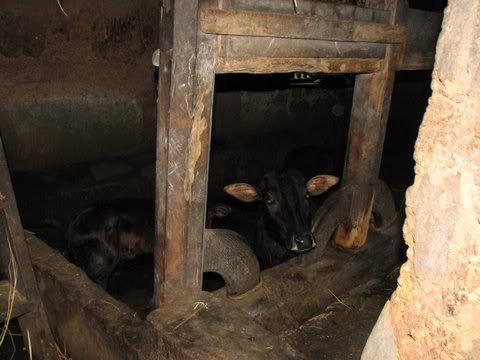 The house has, of course, the central courtyard, with a sacred thulasi (basil)plant in its centre:
The house has, of course, the central courtyard, with a sacred thulasi (basil)plant in its centre:
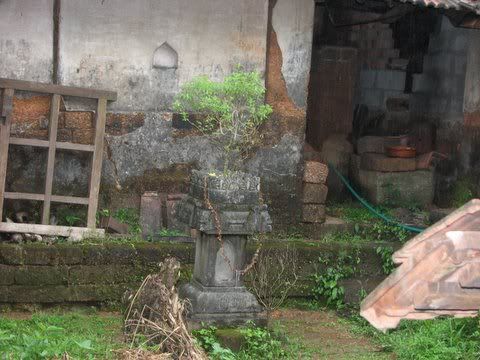 Alas, the courtyard was not very well-kept; in fact, everywhere, the less-than-artistic modern materials (such as fibreglass sheets here, or plastic buckets,or pots elsewhere) co-existed with the ancient ones. I was just a visitor; how could I assess how difficult it is to maintain the house, and where compromises have to be made?
Alas, the courtyard was not very well-kept; in fact, everywhere, the less-than-artistic modern materials (such as fibreglass sheets here, or plastic buckets,or pots elsewhere) co-existed with the ancient ones. I was just a visitor; how could I assess how difficult it is to maintain the house, and where compromises have to be made?
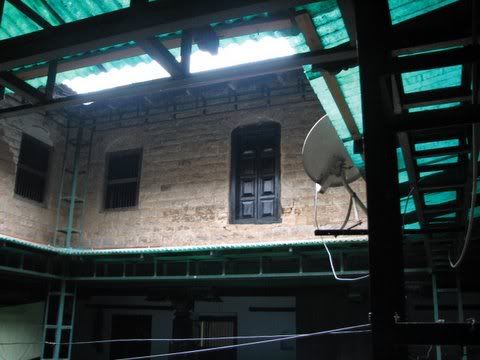 However, some things, like these solid window shutters, were in their old condition:
However, some things, like these solid window shutters, were in their old condition:
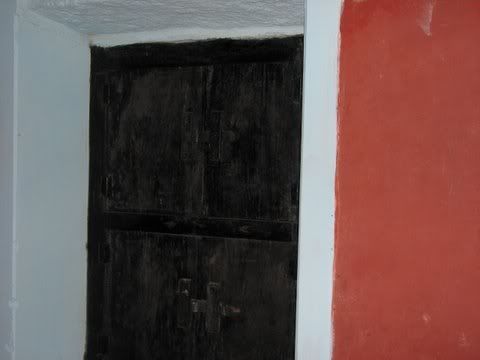 Another example of artistic activity that I found was that some images were being fashioned, for the upcoming Navaratri.
Here's the mould for the face of Durga. It was very intruiging to see the Bengali idiom here, in the middle of the Western ghats...
Another example of artistic activity that I found was that some images were being fashioned, for the upcoming Navaratri.
Here's the mould for the face of Durga. It was very intruiging to see the Bengali idiom here, in the middle of the Western ghats...
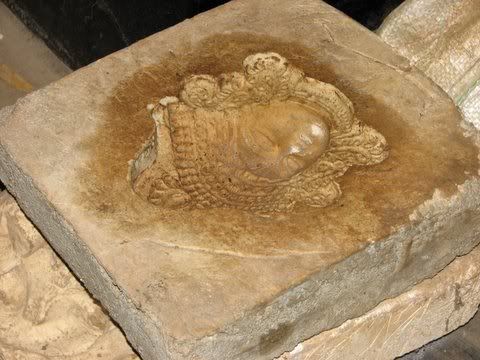 An idol of Saraswati, the Goddess of Learning, was also being created:
An idol of Saraswati, the Goddess of Learning, was also being created:
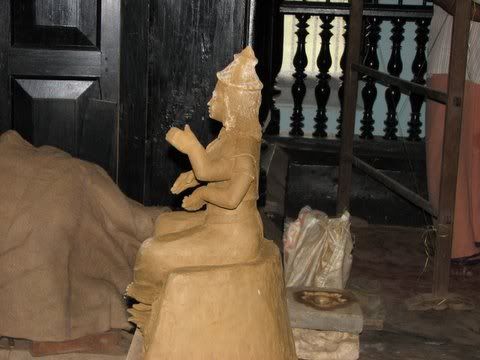
The hands for another idol had been crafted, and set out to dry:
The images of Dodda Mane are still very fresh in my mind, and I do hope these pictures give you some idea of the beauty of that old house,which is still a home!
Here’s my post about the kashAyA that we were offered, there:
http://deponti.livejournal.com/450084.html
*

